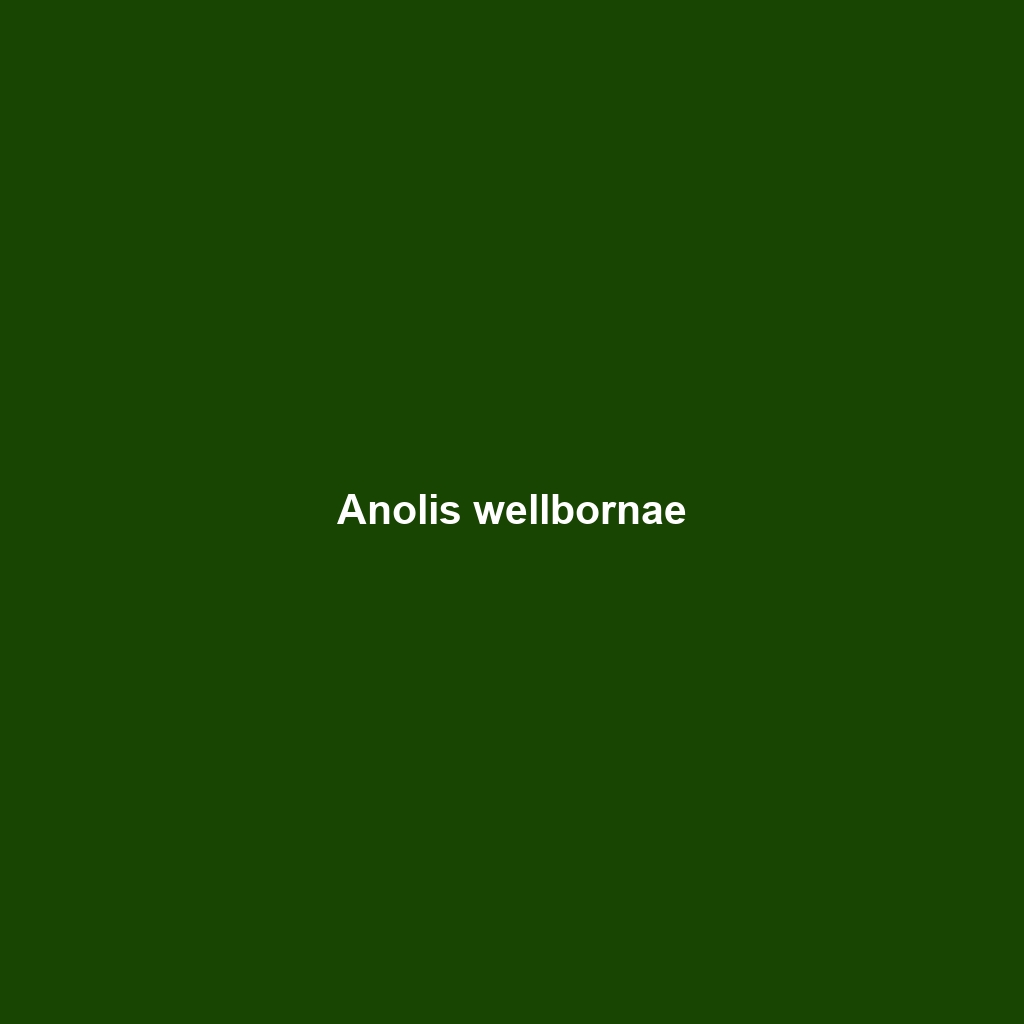Anolis wellbornae
Common Name: Anolis wellbornae
Scientific Name: Anolis wellbornae
Habitat
Anolis wellbornae is primarily found in the lush tropical forests of Central America, particularly in countries such as Panamá and parts of Costa Rica. This species thrives in humid environments and can often be spotted in lowland rainforests and near forest edges, preferring areas with abundant vegetation for cover and hunting.
Physical Characteristics
Anolis wellbornae is a medium-sized lizard, typically measuring around 4 to 6 inches in length. Its coloration varies, showcasing vibrant greens and browns that provide excellent camouflage against the foliage. Notable features include a distinctive dewlap in males, which can be displayed during territorial displays or courtship. The streamlined body shape and elongated limbs allowing for agile movements contribute to its ability to navigate through dense vegetation effectively.
Behavior
Anolis wellbornae exhibits a variety of intriguing behaviors, particularly its territorial displays among males. These lizards are diurnal, meaning they are most active during daylight hours, often basking in sunlight to regulate their body temperature. They are known for their remarkable climbing abilities and can often be seen perched on branches or leaves, scanning their surroundings.
Diet
The diet of Anolis wellbornae primarily consists of small insects and arthropods. Common food sources include crickets, ants, and small flies. These lizards are opportunistic feeders and may also consume other small invertebrates, showcasing their adaptability in hunting and foraging.
Reproduction
Anolis wellbornae engages in a typical breeding season during the warmer months, generally from late spring to early summer. Males perform elaborate courtship displays to attract females, including displays of their colorful dewlaps. Females usually lay a clutch of 1 to 2 eggs in the soil, which incubate for several weeks before hatching.
Conservation Status
Currently, Anolis wellbornae is listed as ‘Least Concern’ on the IUCN Red List. However, habitat loss due to deforestation and environmental changes poses potential threats to their population in the wild.
Interesting Facts
One fascinating fact about Anolis wellbornae is its ability to change color slightly in response to environmental conditions and emotional states. This adaptability not only aids in camouflage but may also play a role in social interactions among lizards.
Role in Ecosystem
Anolis wellbornae plays a crucial role in its ecosystem as both a predator and prey. By controlling insect populations, they contribute to the ecological balance, while also serving as a food source for birds and larger predators. Their presence indicates a healthy, diverse environment in their native habitats.
